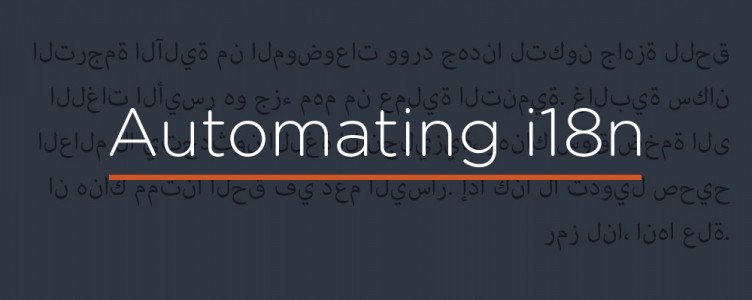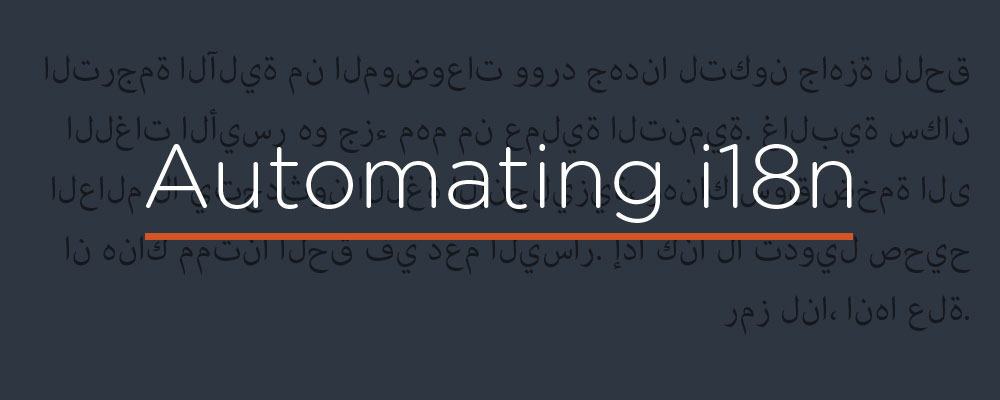 According to the Polygots Make blog, WordPress is used all over the world and in many different languages. To put that in perspective, more than a third of existing WordPress installations are non-English and in his keynote at WordCamp Seattle, core developer Andrew Nacin mentioned that only 5-10% of the world speaks English.
According to the Polygots Make blog, WordPress is used all over the world and in many different languages. To put that in perspective, more than a third of existing WordPress installations are non-English and in his keynote at WordCamp Seattle, core developer Andrew Nacin mentioned that only 5-10% of the world speaks English.
At AudioTheme, we’ve been selling themes for a little more than a year and have already had sales in at least 45 countries, with only around 52% of total sales coming from customers in the United States.
It doesn’t take a math degree to know there’s a huge opportunity for growth.
WordPress itself has rich language capabilities and the core developers are continuously improving the experience for non-English users. With a major push in 4.0, and continuing through the end of the year, it’ll become easier than ever to use WordPress in other languages.
As a developer, it only makes sense to prepare your themes and plugins for use in other languages — a process called internationalization (i18n). In his primer on i18n and localization (l10n), Brian Krogsgard concluded by saying:
It’s time for us to stop ignoring other languages. Internationalization isn’t a feature. If you don’t have properly [internationalized] plugins and themes, you have bugs in your project. That’s all there is to it.
Needless to say, it can be a frustrating experience when WordPress plugins and themes are difficult to work with in other languages because they’re not properly internationalized, but too often, i18n really is an afterthought. Part of that comes down to confusion about what’s involved and it’s partly due to the tedium of setting up and maintaining the tools and environment.
Fortunately, it’s fairly easy to implement i18n and there are tools that can help automate some of the mundane aspects.
i18n Basics
For the most part, preparing a theme consists of a few basic steps:
- Internationalize strings with gettext function calls during development
- Add “Text Domain” and “Domain Path” headers
- Load the language file with a call to
load_theme_textdomain() - Create an RTL style sheet
- Generate and include a POT file
There is a plethora of resources about getting your projects up to snuff, but i18n is also an ongoing process. Those last two items, in particular, may require continued maintenance.
I’m a big fan of automating workflows to save time; reduce the tedium of repeatable tasks; maintain consistency between team members, operating systems, and tools; and improve quality. At AudioTheme, we’ve worked hard to refine our processes, build tools, and make our products accessible to international audiences, so I’d like to introduce a couple of the tools and methods we’ve built and use to create POT files, generate RTL style sheets and enqueue them.
Generating POT Files
WordPress has a fairly robust suite of PHP tools for handling all sorts of internationalization tasks, namely generating POT files, but they were somewhat hidden before being incorporated into the core development branch in 3.6. Even so, they’re still awkward to use with plugins and themes and require external dependencies like gettext, which can be hard to install on some systems. Getting everyone on a team properly set up and using them consistently can be quite the hassle.
That’s where grunt-wp-i18n helps out. It’s essentially a Grunt plugin wrapper for the PHP-based tools, which is important because they handle some WordPress-specific things like package headers, translator comments and page template names.
We’ve been able to remove many of the dependencies required by the PHP tools, so if you’re already using Grunt, you’re all set — not even WordPress is needed. The Grunt plugin also provides much more control over the data that ends up in the POT file, allowing you to make it even easier for users to localize their themes using tools like Poedit.
Once a project is configured, the POT file can be regenerated every time a new version is released.
It’s already been adopted by plugins like Jetpack, bbPress, BuddyPress and WordPress SEO by Yoast, amongst others. Here’s a Gist demonstrating how to incorporate it into your project.
